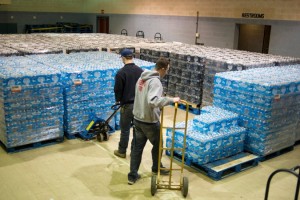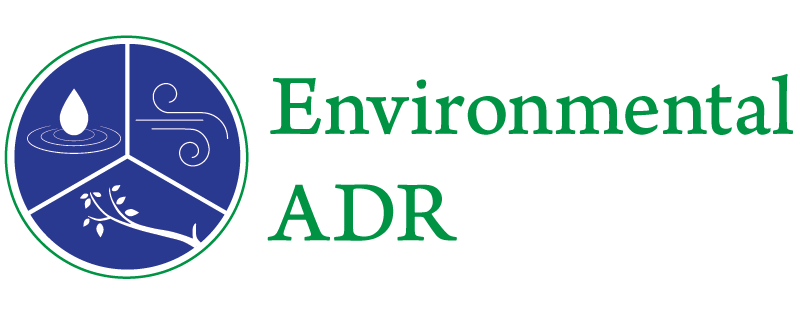 In Sebring, Ohio, routine laboratory tests last August found unsafe lead levels in the town’s drinking water after workers stopped adding a chemical to keep lead water pipes from corroding. Five months passed before the city told pregnant women and children not to drink the water, and shut down taps and fountains in schools.
In Sebring, Ohio, routine laboratory tests last August found unsafe lead levels in the town’s drinking water after workers stopped adding a chemical to keep lead water pipes from corroding. Five months passed before the city told pregnant women and children not to drink the water, and shut down taps and fountains in schools.
In 2001, after Washington, D.C., changed how it disinfected drinking water, lead in tap water at thousands of homes spiked as much as 20 times the federally approved level. Residents did not find out for three years. When they did, officials ripped out lead water pipes feeding 17,600 homes — and discovered three years later that many of the repairs had only prolonged the contamination.
The crisis in Flint, Mich., where as many as 8,000 children under age 6 were exposed to unsafe levels of lead after a budget-cutting decision to switch drinking-water sources, may be the most serious contamination threat facing the country’s water supplies. But it is hardly the only one.
Unsafe levels of lead have turned up in tap water in city after city — in Durham and Greenville, N.C., in 2006; in Columbia, S.C., in 2005; and last July in Jackson, Miss., where officials waited six months to disclose the contamination — as well as in scores of other places in recent years.
Federal officials and many scientists agree that most of the nation’s 53,000 community water systems provide safe drinking water. But such episodes are unsettling reminders of what experts say are holes in the safety net of rules and procedures intended to keep water not just lead-free, but free of all poisons.
The Environmental Protection Agency says streams tapped by water utilities serving a third of the population are not yet covered by clean-water laws that limit levels of toxic pollutants. Even purified water often travels to homes through pipes that are in stunning disrepair, potentially open to disease and pollutants.
Although Congress banned lead water pipes 30 years ago, between 3.3 million and 10 million older ones remain, primed to leach lead into tap water by forces as simple as jostling during repairs or a change in water chemistry.
“We have a lot of threats to the water supply,” said Dr. Jeffrey K. Griffiths, a professor of public health at Tufts University and a former chairman of the E.P.A.’s Drinking Water Committee. “And we have lots of really good professionals in the water industry who see themselves as protecting the public good. But it doesn’t take much for our aging infrastructure or an unprofessional actor to allow that protection to fall apart.”
Both researchers and industry officials say problems extend well beyond lead. Many potentially harmful contaminants have yet to be evaluated, much less regulated. Efforts to address shortcomings often encounter pushback from industries like agriculture and mining that fear cost increases, and from politicians ideologically opposed to regulation.
Rules and science are outdated. The E.P.A.’s trigger level for addressing lead in drinking water — 15 parts per billion — is not based on any health threat; rather, it reflects a calculation that water in at least nine in 10 homes susceptible to lead contamination will fall below that standard.
And while political leaders upbraid the E.P.A. and state regulators for laggard responses to crises in Flint and elsewhere, they have themselves lagged in offering support. Adjusted for inflation, the $100 million annual budget of the E.P.A.’s drinking water office has fallen 15 percent since 2006, and the office has lost more than a tenth of its staff.
States are equally hard hit. In 2013, the Association of State Drinking Water Administrators said federal officials had slashed drinking-water grants, 17 states had cut drinking-water budgets by more than a fifth, and 27 had cut spending on full-time employees. “The cumulative effect of the resource gap has serious implications for states’ ability to protect public health,” the group stated.
As Flint’s water crisis surfaced last fall, Congress was considering the E.P.A.’s effort to clarify its regulatory powers over tributaries and wetlands — the streams that supply water to a third of Americans.
Both houses passed legislation to block a new Clean Water Act regulation, the Waters of the United States rule, that aims to assert authority over those waters, which the Supreme Court had questioned in 2001 and 2006rulings.
And Senator James M. Inhofe, the Oklahoma Republican who is chairman of the Committee on Environment and Public Works, denounced the rule as a federal power grab.
President Obama vetoed that legislation last month, but more than two dozen states have sued to block the rule. Among their arguments: It would hurt business.
An E.P.A. spokeswoman said Friday that the agency hoped to propose strengthened regulation of lead in drinking water in 2017, something the agency’s administrator, Gina McCarthy, said was needed in a speech this month in Flint. She pledged then to start “a national conversation about this country’s water infrastructure” and resources for states.
Ms. McCarthy has also issued a new policy calling for federal regulators to take a more active role in the face of public health crises.
Read the entire article at The New York Times
This was originally published int he New York Times written by






Leave a Reply